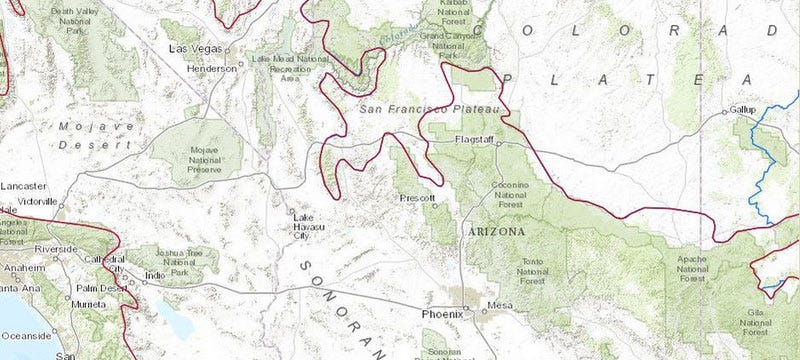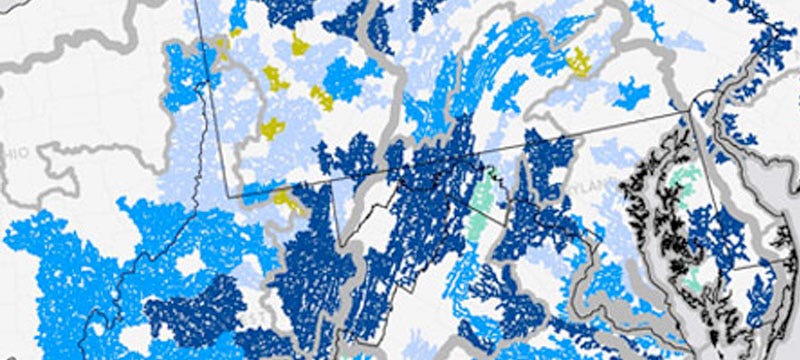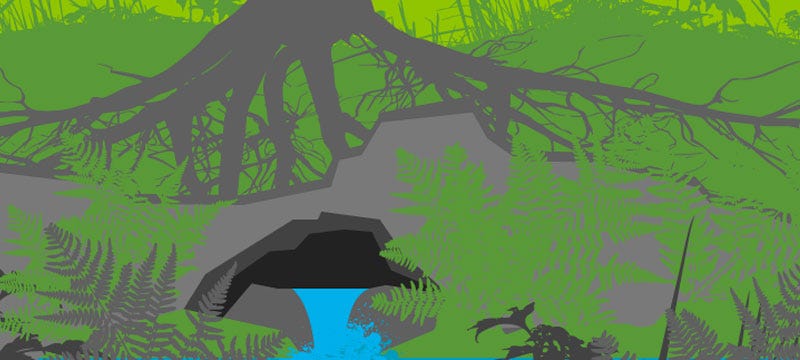Hide and Seep: Citizen Science and the Fresh Water Cycle
Published on by Peter Neill, Founder and Director at World Ocean Observatory in Academic
Springs are the point of origin for all that follows in terms of study, protection, and sustainability of the world’s ocean and fresh water resources.
Our planet is a sphere, 70% covered by the ocean. That ocean, however, is not limited to the sea itself: it begins at the mountaintop and descends to the abyssal plain; it is a network of falling watersheds to the sea that encompass a system of cycles of conveyance in the ocean/freshwater continuum, drawing waterlines across all facets of the surface of the earth.
These are all circles of connection. Our planet is Aqua, not Terra, and we are all water, now and forevermore. As I have argued this often before: the water system lies at the heart of our strategy for human survival in the 21st century. If we fail to sustain it, we fail to sustain ourselves. It is so urgent and obvious. Three days without oil or gas or coffee or chocolate, and we carry on, deprived and grouchy. But three days without water, as individuals, families, communities, or nation-states, we die.
But where in this collective of circles can we point to a place where the ocean begins?
Consider springs, those hidden seeps and sources of water from the inside of the earth that rise from the core to the ground, and even to the ocean floor, to feed our puddles, ponds, lakes, streams and rivers, our swamps and coastal marshes, our bays and seas. From these tiny fonts comes a flow that like a skein of veins and arteries distributes water into our bodies, our foods, our manufacturing systems, and all the other social and financial dynamics of our lives. What starts so small ends up so vast. By the shore we see the fulsome expanse of open water, but inland we may never know even where the spring sources lie, where they come and go, where they should be mapped, studied and protected, where they fit into this enormous water cycle that sustains us.

credit: Springs Stewardship Institute
I was delighted recently to be introduced to the Springs Stewardship Institute, a program based at the Museum of Northern Arizona in Flagstaff, developed and directed by Dr. Larry Stevens as a local initiative to advance research and springs ecosystems on the Colorado Plateau in the United States and around the world. The goals are similar to other such academic projects: identification, location mapping, research, standards for stewardship, training, publication, educational outreach, results, workshops, webinars, and online presence and connection. But, in this case, it is the focus of this effort that is to be communicated, novel and meaningful as a piece of the water study circle unexamined and vulnerable. For purposes of our understanding today, let’s declare that springs are that point of origin for all that follows in terms of study, protection, and sustainability of the world’s ocean and water resources.
Can you participate? Well, yes you can. The Springs Stewardship Institute, in collaboration with the US National Parks Service, Bureau of Land Management, and ESRI, a developer of mapping and analytics software, has created an app, Hide and Seep , that provides a tool to map spring locations, add new ones, provide on-the-ground information, keep current sites up-to-date, and add a new location anywhere in the world — all through your smart phone in the field. Hide and Seep is an amazing tool for citizen science, educational field trip engagement, portable access to comparative data and information, and crowd-sourced research in places where no single expedition or researcher can practically go.

credit: Conservation International
The visual inventory on the site maps is concentrated in the Desert Southwest — there are more than 90,000 springs in the current database! New ones are being added every day, providing coordinates, photographs, iconography, and various information protocols that collectively provide an enormous knowledge base for study, management, and protection created in an astonishingly short period of time by a spontaneous, diverse and multiplying international team of researchers: you and me.
All of us know springs in our surrounding environments. Let’s add those to this responsible accumulation. Think about the full aggregation, the full inventory of all these places of origin for the water that makes our ocean and all that it provides. It is the definition of the ocean itself, and we are the researchers.
 PETER NEILL is founder and director of the World Ocean Observatory and is author of “The Once and Future Ocean: Notes Toward a New Hydraulic Society.” He is also the host of World Ocean Radio, a weekly podcast addressing ocean issues, upon which this blog is inspired.
PETER NEILL is founder and director of the World Ocean Observatory and is author of “The Once and Future Ocean: Notes Toward a New Hydraulic Society.” He is also the host of World Ocean Radio, a weekly podcast addressing ocean issues, upon which this blog is inspired.
Media
Taxonomy
- Ecosystem Management
- Water Resources
- Watershed
- Conservation
- Freshwater
- Envirionmental Data Management
4 Comments
-
Yes, indeed - We are in dire trouble! Life's important bastion, the Ocean, is collapsing (and we as a whole remain ignorant of its importance and its fragility). But it need not continue, if we could only unite, to end Humanity's ill respect towards the Natural World which we so depend. The Know How already exists - It just needs Will of the Community to implement change... My/Our continued barrier and frustration is forever met by a perception of Philanthropy, but it should not be perceived in such a way - The time for a shift in paradigm, based on a simple respect for nature, is well and truly overdue. I/we warmly welcome the interest and support of anyone able to assist with our cause, if not for the common good of ALL LIFE on EARTH then for your Children, and their Children's Children. www.baleen.com
-
Very insightful and informative read Mr. Peter Neill, thank you for posting!
-
Do not notice that this huge water cycle we destroyed.
The complete cycle of water between the earth and the atmosphere includes a link of organic transformations. Mankind does not understand this and uses water as a working reagent. At the water we take away its main function - to permeate underground and terrestrial creatures and plant roots. Water, evaporating from asphalt, arable land, from boilers, drying units returns to the atmosphere. And the volumes of such fumes are increasing every day. Hence all the troubles with climate change and natural disasters. Life on the planet can be saved only by returning organic and reducing artificial fumes. -
Thank you for posting! Oh, and thank you for the work you do at the World Ocean Observatory!
